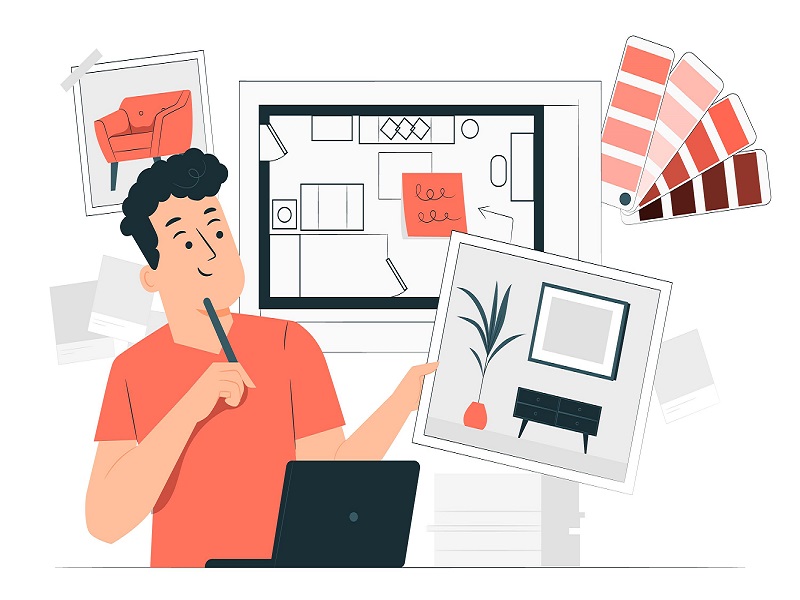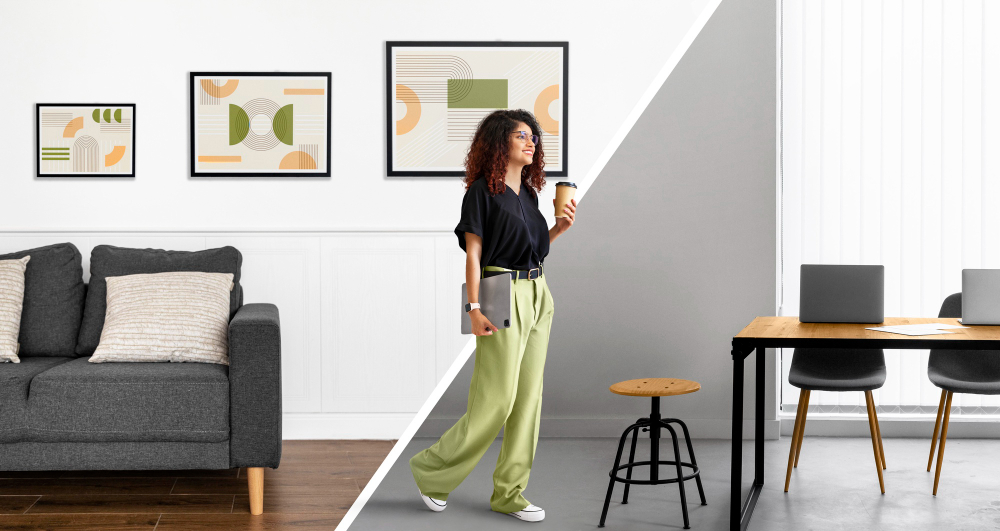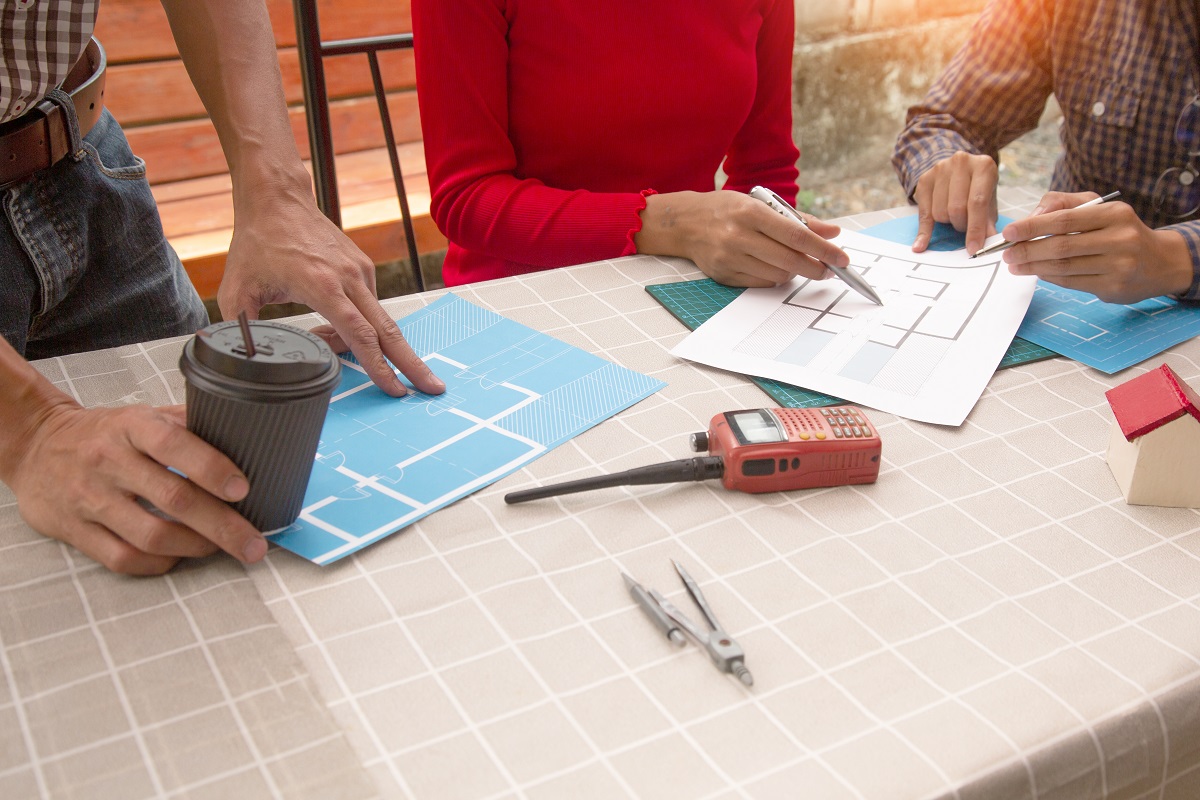Role of an Interior Designer: From Concept to Execution
An interior designer’s job is not limited to selecting colours, cushions, and curtains, but only a fragment of what they actually do, unlike the misconception by many. Interior designers are like the problem-solvers who bring both creativity and logic to the table, ensuring that the space, be it a home, office, or even a store, works well for the people using it.
In a country like India, where families often share space across generations or where a single room might have to serve many purposes, interior designers play a very important role, using every corner smartly while sticking to a budget.
According to the IMARC Group, the interior design industry is expected to reach USD 71.0 billion by 2033, reflecting the sector’s potential and how many opportunities it offers for creative minds.
So, continue reading the blog to go through a journey of an interior designer beyond the mood boards and colour charts.
What does an Interior Designer do?
Do you want free career counseling?
Ignite Your Ambitions- Seize the Opportunity for a Free Career Counseling Session.
- 30+ Years in Education
- 250+ Faculties
- 30K+ Alumni Network
- 10th in World Ranking
- 1000+ Celebrity
- 120+ Countries Students Enrolled
An interior designer does much more than just picking out furniture or matching colours. They study how people use spaces and make sure every part of the room works well, not just looks good. Their job is to plan, design, and guide how a space should feel, look, and function, all while keeping safety, comfort, and client needs in mind.
In India, where homes often have to fit a lot of people and serve many uses, interior designers help create smart layouts. For example, a single living room can be transformed into a space that works as a dining area, study corner, and even a guest bedroom. They understand local habits, Vastu beliefs, and budget limits, and still find a way to make everything look beautiful and resourceful.
Read Also: Bachelor Courses After 12th: Explore Opportunities in Commerce, Science, and Arts
Book Now →
Interior design is about improving how people live in their homes, work in offices, or shop in stores. It is not just about beauty, it is about balance, function, and feeling.
The Interior Design Process: From Concept to Execution
When you walk into a beautifully designed space, it’s easy to admire the colours, lighting, and furniture. But what you don’t see is the detailed, thoughtful process that brought that space to life. Interior design is a well-planned process that transforms a space into living, breathing environments that reflect one’s personality.
Let us walk through the step-by-step process an interior designer follows to decipher the role of this profession, right from the conception of an idea to the moment the client steps into their dream space.
Do you want free career counseling?
Ignite Your Ambitions- Seize the Opportunity for a Free Career Counseling Session.Client Briefing and Site Analysis
Prior to the onset of a project, the first step for a designer entails meeting the client to understand their daily lifestyle, tastes, pain points, and aspirations.
Along with the briefing, designers proceed to conduct a detailed site visit to note down details that can impact design choices, especially in buildings where beam placements or water seepage are common issues.
Conceptualization and Mood Board Creation
In the second phase, the designer’s ideas are translated into rough sketches, concept notes, and digital mood boards, collections of colour palettes, materials, reference photos, and layout ideas.
This phase often involves integrating personal beliefs, rituals, or nostalgic elements, maybe incorporating handwoven fabrics from a grandparent’s village or designing a living room that can double up as a gathering space during festivals.
Space Planning and Design Development
Once the concept is approved, the focus shifts to function. Designers carefully plan zones, separating quiet areas from active ones, ensuring free movement, and making the space efficient and ergonomic.
Read Also: Six Mistakes to Avoid When Decorating a Living Room
Tools ike AutoCAD, SketchUp, and Revit help in this case, allowing the creation of accurate layouts and technical clarity.
Material and Finish Selection
Designers then select surfaces, textures, colours, and fabrics, not just based on style but on real-life logic. Given the climatic conditions and growing focus on sustainability, designers also explore eco-friendly materials, locally sourced furniture, or low-VOC paints.

Read Also: Vaastu-Friendly Interior Design Principles
Technical Drawings and 3D Visualizations
56/200 copy-text60 words To clarify for the client and the contractor, designers make detailed working drawings and 3D renders. These graphics help prevent communication issues on-site and allow the client to “see” their soon-to-be space before proceeding with the construction.
Budgeting, Cost Estimation & Procurement
Thereafter, designers prepare a detailed budget, breaking down materials, labour, furnishings, and more costs. In this phase, the designer also needs to conduct market research to avail and negotiate the best deals as per the client’s requirements.
Execution, Supervision, and Quality Control
This is the most demanding part. Designers manage carpenters, electricians, painters, and plumbers to ensure every step aligns with the design vision. They’re on-site to catch mistakes early, maintain timelines, and handle unexpected hiccups — from delays in material delivery to sudden budget changes.
In India, dealing with multiple contractors and keeping everyone accountable is both an art and a skill.
Final Styling and Project Handover
Finally, the interior designer adds the finishing touches, placing cushions, hanging artwork, setting up lights, and fixing any last-minute snags. More than decoration, this stage is about creating the emotional impact, making a space feel like home.
Skills Every Interior Designer Needs to Succeed
Being an interior designer is not just about having a good eye for style and aesthetics. Especially in India, to be an Interior Designer, you would need to deal with tight budgets, understand family dynamics, and even respect vastu dosh! To handle all of this with grace, an interior designer must have a blend of technical, practical, and personal skills.
Read Also: Top 10 Famous Interior Designers in the World
Creative Thinking
A designer must be able to imagine the invisible, as in how a small, cluttered room can feel open and welcoming, or how natural light can change the mood of a space.
Project Management Skills
Great ideas only work if they are delivered well. Designers need to manage timelines, budgets, teams, and materials, often all at once.
Attention to Detail
The alignment of tiles, the placement of light switches, and the choice of drawer handles these details that can make or break the experience of a space, therefore, an interior designer must possess a keen attention to detail.
Technical Know-How
Designers must understand materials, lighting design, colour psychology, and building regulations. Moreover, building on technical proficiency is just as important as knowing how to work with local vendors and explaining drawings in simple terms to contractors.
Communication and Problem Solving
Clients may not always know what they want, or they may change their minds last minute. Designers must communicate ideas clearly, listen with empathy, and handle feedback without ego.
Emotional Intelligence and Client Connection
Every home tells a story. A good designer knows how to understand and translate emotions into design, whether it is making a space feel more ‘homely’ for a couple who just shifted from a small town or designing a room that reflects a gothic vibe.
Conclusion
Interior designers are more significant than they are often given credit for, from applying empathy toward understanding people’s requirements, to transforming empty rooms into well-intended spaces. In a country like India, where every individual’s home has its own spirit and story to tell, this profession offers a lifetime of opportunities to visualize someone’s conception.
Read Also: Top 10 Careers to Pursue with a Degree in Interior Design
Whether you want the illusion of more space in a tiny apartment, to merge old traditions and modernity, or to bring a family vision to life, interior design is an area brimming with creativity and intent.
But to turn your interest into a successful career, you need more than just talent. You need the right skills, guidance, and practical training. So, explore AAFT School of Interior Design to see what we offer. Explore AAFT, Interior Design programs and take the first step toward a future full of creativity and growth!

AAFT has been providing the world with limitless creativity and expression since 1993! Through a dynamic and industry-driven curriculum, AAFT provides engaging and captivating articles to persuasive blogs and empowers its readers to explore diverse avenues of creative media education-related content.






